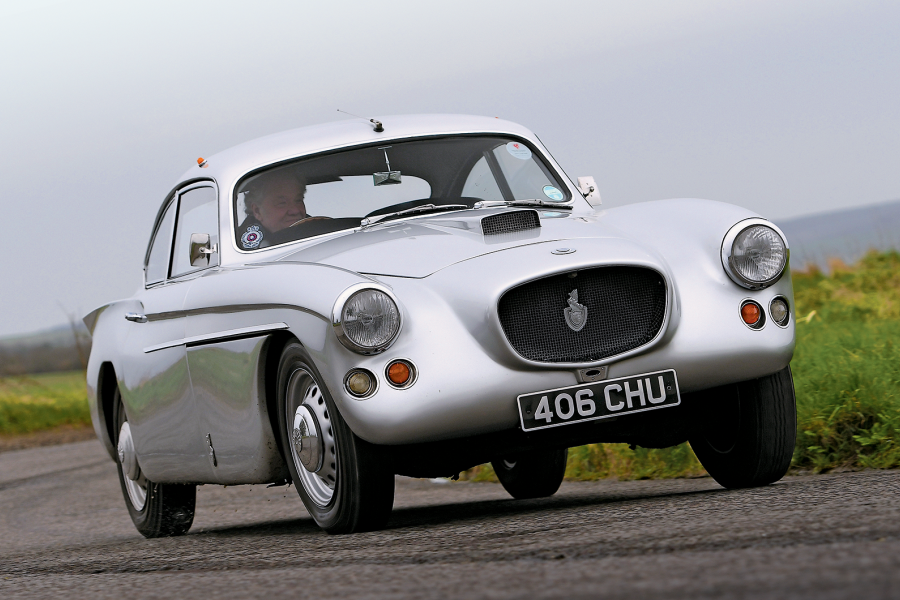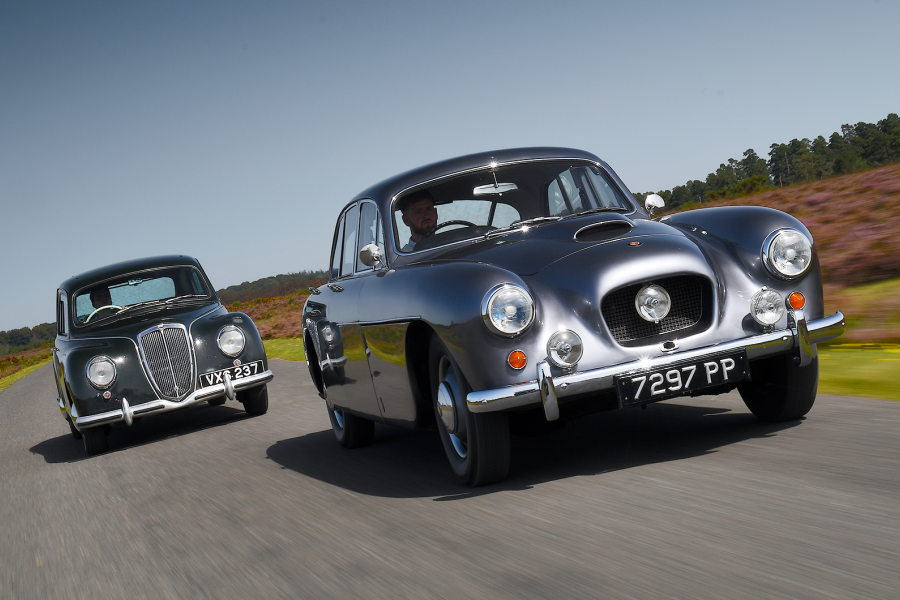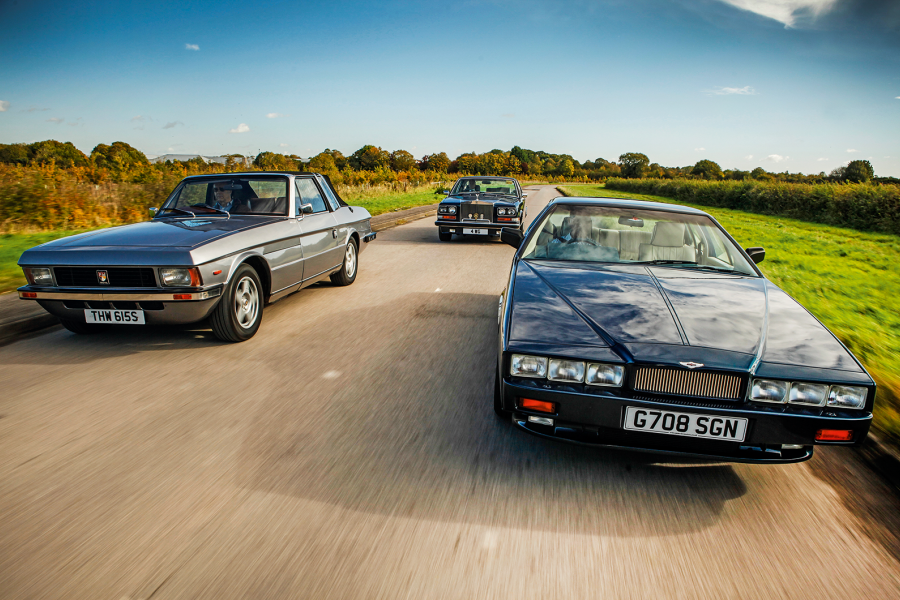Press harder – the pedal has a particularly pleasing feel – and the pressure disparity between the manifold and the Carter four-barrel carburettor equalises, gradually closing the priority valve and putting mixture straight into the compressor as the car surges away in one thrilling, seamless bound of solid thrust that gets stronger just as you think it’s about to tail off.
‘The 360º views the full convertible affords give the Beaufort a surprisingly different feel, but it is just as lively and rattle-free to drive as the 412’
The additional (also undisclosed) power is well matched to the change-up points of the Torqueflite so that dignity is always maintained.
Self-levelling rear suspension plays its part in this and the live axle, sprung by torsion bars and restrained by a Watt linkage, only betrays itself with the occasional twitch on mid-corner bumps.
The Beaufighter was more firmly set up than the 412 from the factory, but the difference feels marginal here (you could have your adjustable dampers set to taste in any case).
With its remote boot release, electric mirrors and central locking, the Beaufighter shows how Crook and his faithful team at Concorde Road, Patchway, were keeping their cars abreast of ’80s developments in labour-saving luxuries.
The Beaufort is a postscript to the 412 story, a fully open car without the rollbar and fitted with a powered top.
The Bristol Beaufort shares its dashboard with the 412
Destined to be a one-off, it was created at Crook’s instigation as a way of getting a foothold in the US market – hence left-hand drive – but was a serious enough idea to warrant printing a brochure.
Built in 1984, but not registered until ’88, the Beaufort’s first owner was Crook himself, who later commented that the hood rams took up too much rear-seat space, which was why the project was abandoned.
Originally finished in cream, the Beaufort was later bought by an Egyptian businessman who, due to illness, abandoned it in a hotel car park in London.
It slipped into the used-car trade for a while but has since re-emerged in a much more fetching shade of Aston Martin Midnight Blue.
The left-hand-drive Bristol Beaufort was intended for the US market
While later Beaufighters had a flat dash panel, the Beaufort retains the classic seven-dial binnacle with cream leather seats piped in blue.
Hood down, the Beaufort loses the 412’s quirky charm.
Hood up it verges on being quite handsome, but the compromised rear vision and back-seat space make it less practical.
The power top works unobtrusively and looks neat when stowed.
The 360º views it affords give the Beaufort a surprisingly different feel, but essentially it is as lively and rattle-free to drive as the 412.
The Bristol Beaufort’s lighter, more compact V8 helped with the car’s balance
If the 411 was almost self-consciously sober, the 412 was Bristol’s first attempt to build a more flamboyant offering, a car in the mould of the Rolls-Royce Camargue and the soon-to-emerge William Towns Lagonda.
Bold and sharp-edged, the 412 didn’t seek to fade into the background but was a ‘statement’ motor car in the ’70s idiom.
They have grown on me over the years and, while they are still an acquired taste (reflected in surprisingly realistic prices for such a rarity), the passage of time may eventually allow these eccentric cars to have their day.
As of now, as a Zagato-styled, Chrysler-powered statement of luxuriously practical open-top British individualism, there is nothing to touch them.
Images: Olgun Kordal
Thanks to: SLJ Hackett
This was originally in our December 2019 magazine; all information was correct at the date of original publication
Factfile
Bristol 412/Beaufighter
- Sold/number built 11975-’92/59 (inc Beaufort)
- Construction steel chassis, aluminium body
- Engine all-iron, ohv 6556/5898cc V8, with Carter four-barrel carburettor (Rotomaster turbocharger on Beaufighter)
- Max power not disclosed
- Max torque not disclosed
- Transmission three-speed automatic, RWD
- Suspension: front independent, by double wishbones, coil springs rear live axle, semi-elliptic leaf springs; lever dampers f/r
- Steering ZF recirculating ball
- Brakes discs
- Length 16ft 2½in (4940mm)
- Width 5ft 9¾in (1770mm)
- Height 4ft 8½in (1435mm)
- Wheelbase 9ft 6in (2896mm)
- Weight 3780Ib (1715kg)
- 0-60mph 7.9 secs (412)
- Top speed 140mph
- Mpg 13-15
- Price new £14,584
READ MORE
Bristol 450: Filton’s finned flyer
Don’t buy that, buy this: Bristol 406 vs Mercedes Ponton Coupé
Grand tourer supertest: AC Aceca vs Aston Martin DB2 Vantage vs Bristol 404 vs Lancia Aurelia B20 GT
Martin Buckley
Senior Contributor, Classic & Sports Car






















